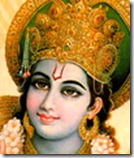 “In the same way that a golden jewelry box holds the most precious gem inside, while remembering the nirguna aspect in the heart and keeping the saguna aspect in front of the eyes, place Shri Rama's supremely auspicious holy name on the tongue, says Tulsi.” (Dohavali, 7) “In the same way that a golden jewelry box holds the most precious gem inside, while remembering the nirguna aspect in the heart and keeping the saguna aspect in front of the eyes, place Shri Rama's supremely auspicious holy name on the tongue, says Tulsi.” (Dohavali, 7)hiyam̐ nirguna nayananhi saguna rasanā rāma sunāma | manahum̐ puraṭa saṃpuṭa lasata tulasī lalita lalāma || Today is a good day. It’s our birthday, and we’ve just received lots of presents from friends and family who’ve attended a celebration to mark the occasion. Amidst the heap of gifts, one stands out in particular. It’s a new iPad, the latest popular electronic device to hit the market. This sleek and elegantly designed little tablet packs some real power, as it allows the user to read books, view photos, surf the internet and watch videos with ease while it rests comfortably within the hands. No heavy machine to carry around, and no eye straining monitor to stare at for hours on end. The iPad is a game-changer, a new way of viewing multimedia and interacting with the world. Yet with these wonderful features that are packed into the brand new toy that now means so much to us comes a concern over protection. “How will I safeguard this wonderful new device from getting scratched? How will I ensure that I can carry it around and not have it get damaged? Let me find a nice case for it.”  A similar pattern of thought is followed by owners of many other high end devices, including cellular telephones. The touch screens on these new devices are sensitive by design, as they must be responsive to even the slightest pressure applied by the fingers. With this sensitivity comes vulnerability to foreign elements, such as too much force, water damage, and contact with sharp objects. The owner who purchased their new gadget will want to protect their investment, and the person who was gifted their device will want to ensure that their treasure remains usable for a long time. There is a wide variety of protective cases available, with each one meeting different requirements. Some people choose extra protection over aesthetic appeal, while others want a fancy looking case that is pleasing to the eye. Some are very interested in being able to move the object around when placed within a bag or pocket, so they will stay away from the cases that are rubberized and can easily accumulate lint and dust. To others this very gripping is what they are looking for, as they want to eliminate all chances of the device slipping and falling to the ground. A similar pattern of thought is followed by owners of many other high end devices, including cellular telephones. The touch screens on these new devices are sensitive by design, as they must be responsive to even the slightest pressure applied by the fingers. With this sensitivity comes vulnerability to foreign elements, such as too much force, water damage, and contact with sharp objects. The owner who purchased their new gadget will want to protect their investment, and the person who was gifted their device will want to ensure that their treasure remains usable for a long time. There is a wide variety of protective cases available, with each one meeting different requirements. Some people choose extra protection over aesthetic appeal, while others want a fancy looking case that is pleasing to the eye. Some are very interested in being able to move the object around when placed within a bag or pocket, so they will stay away from the cases that are rubberized and can easily accumulate lint and dust. To others this very gripping is what they are looking for, as they want to eliminate all chances of the device slipping and falling to the ground.Regardless of the case, it is the device that remains important. Even if a nice golden case were to be found, one which met every requirement of the owner, it is still the device itself that is the true gem, for the potential for enjoyment comes with its use. In a similar manner, with the variety of prescriptions proposed for attaining salvation in the spiritual sense, the waters tend to get muddied, with each system appearing to be valid in its own right. But there is only one true gem of spiritual practice, and when it is understood and seen as being more important than all the other disciplines and procedures, which can be likened to the sides of a golden box or protective cases themselves, the living entity can make real progress in their march towards eternal freedom.  Why is there even a need for enlightenment? Why can’t we just play with our toys for the rest of our lives? Why does God and spiritual life even have to be pondered? Though these things don’t have to be thought about, they should, for that is the benefit to the human form of body. The young child doesn’t worry about school, growing up, mortgage payments, getting married, having kids of their own or so many other adult responsibilities. They simply play all day and seek fun through their full reservoir of energy. As an adult, if you walk into any establishment where young children are around, you will see that they are much more active than the parents. They will have no trouble running around from place to place and speaking in volumes not appropriate for general conversation. They are filled with energy after all, so they have trouble sitting still for too long. Why is there even a need for enlightenment? Why can’t we just play with our toys for the rest of our lives? Why does God and spiritual life even have to be pondered? Though these things don’t have to be thought about, they should, for that is the benefit to the human form of body. The young child doesn’t worry about school, growing up, mortgage payments, getting married, having kids of their own or so many other adult responsibilities. They simply play all day and seek fun through their full reservoir of energy. As an adult, if you walk into any establishment where young children are around, you will see that they are much more active than the parents. They will have no trouble running around from place to place and speaking in volumes not appropriate for general conversation. They are filled with energy after all, so they have trouble sitting still for too long.Just because the child doesn’t think about the responsibilities of an adult doesn’t mean that the concerns of the mature human being are invalid or a waste of time. On the contrary, the adults run the show, so the deference they give to their priorities ensures that the children can enjoy each day and have fun. Similarly, when the living entity turns their eye towards spiritual life, towards understanding the highest truths and the reason for their existence, a much more enjoyable life can be found. More than just avoiding punishment for sinful activities or reaching a heavenly realm of which little is known, connecting with a higher power is meant to provide a higher taste. This should make sense after all. In any other sphere of activity, engagements of ascending importance correspond to a higher level of enjoyment. The expert karate student will not have any fun going up against a neophyte competitor. The meat eater capable of having filet mignon on a regular basis will not settle for chuck steak. The drinker of fine wine will derive less enjoyment from cheap booze.
 The aim of spiritual life is to connect with a higher being, whose association brings the most enjoyable taste, one that transcends the level of satisfaction and enjoyment brought on by the senses and their contact with material elements. Matter is dull, lifeless and incapable of autonomous movement. Even the elements of wind, earth, fire, and water collected in large numbers are incapable of acting on their own. Some higher power, an autonomous spark, is there to guide the functions and instigate action. The living entities, or any form of life encased in gross matter, are the superior energy in this world, but due to ignorance they willingly subordinate themselves to the inferior energy, matter. The aim of spiritual life is to connect with a higher being, whose association brings the most enjoyable taste, one that transcends the level of satisfaction and enjoyment brought on by the senses and their contact with material elements. Matter is dull, lifeless and incapable of autonomous movement. Even the elements of wind, earth, fire, and water collected in large numbers are incapable of acting on their own. Some higher power, an autonomous spark, is there to guide the functions and instigate action. The living entities, or any form of life encased in gross matter, are the superior energy in this world, but due to ignorance they willingly subordinate themselves to the inferior energy, matter.What does this mean exactly? Revisiting the iPad example, the case is only the covering after all, as it protects the valuable product from damage. If we were to get a golden case, one which was very valuable because of the components used in its construction, this still shouldn’t shift the priority system. The device inside the case would still be more important because that is what we are trying to protect. With the living entities, the gem residing within the body is the soul, the individual atma. The body, which is like a covering or fancy case replete with tremendous capabilities, is never as important as the soul, for we know that the body changes all the time. 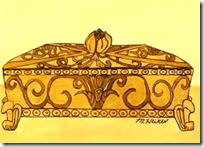 Just as the iPad remains the same despite changes in cases, the spirit soul remains unaffected by the constant shifts in composition to their outer covering. We know that we once survived inside of a case that was no larger than the size of a pea. This was the shape of our dwelling when we lived inside of our mother’s womb prior to birth. When we entered the world and saw light for the first time, our body will still very small. Through it all we managed to mature into adulthood, but what happened to our previous bodies? What happened to the form we had as a child? Obviously these coverings were discarded in favor of more useful ones, cases that would allow the individual’s desires to be better met. Just as the iPad remains the same despite changes in cases, the spirit soul remains unaffected by the constant shifts in composition to their outer covering. We know that we once survived inside of a case that was no larger than the size of a pea. This was the shape of our dwelling when we lived inside of our mother’s womb prior to birth. When we entered the world and saw light for the first time, our body will still very small. Through it all we managed to mature into adulthood, but what happened to our previous bodies? What happened to the form we had as a child? Obviously these coverings were discarded in favor of more useful ones, cases that would allow the individual’s desires to be better met.Based on the discussion thus far, the body would have to be considered inferior to the soul, as it can be discarded without the individual’s identity changing. This should make sense, as we can constantly change cases for our favorite electronic gadget and still not lose the functionality of the original device. But when the cases are given more importance, when they are admired and taken care of while the device itself is never utilized, the behavior would have to be considered unintelligent. Similarly, the animalistic tendencies towards eating, sleeping, mating and defending are not very intelligent because they do nothing to address the needs of the soul.  The spiritual spark craves association more than anything, the pleasure that is divine association. When not illuminated by the torchlight of transcendental knowledge, the individual takes its own covering and the coverings of others to be the sources of identity. Hence the demands of the senses, which are still important, are given precedence over the needs of the soul. To eat is required to maintain the body, but to go beyond meeting the basic necessity for nutrients is not very wise. We need a car to get us to and from work and to take us to important places, but if we go beyond this need and try to make the car our best friend, something we admire and adore more than other aspects of our life, the behavior is not very wise. How much can a car really do for us anyway? The spiritual spark craves association more than anything, the pleasure that is divine association. When not illuminated by the torchlight of transcendental knowledge, the individual takes its own covering and the coverings of others to be the sources of identity. Hence the demands of the senses, which are still important, are given precedence over the needs of the soul. To eat is required to maintain the body, but to go beyond meeting the basic necessity for nutrients is not very wise. We need a car to get us to and from work and to take us to important places, but if we go beyond this need and try to make the car our best friend, something we admire and adore more than other aspects of our life, the behavior is not very wise. How much can a car really do for us anyway?Too much attention paid to sex life, eating nice foods, sleeping and protecting our possessions fails to make proper use of the human form of body. This is where spirituality comes into play, as it addresses the needs of the soul. Yet, not all religious processes are the same. The highest transcendental taste comes from direct association with the Supreme Being, the person from whom all energies emanate. In the Vedic scriptures, He is described by thousands of names. The importance of this tagging system should not be overlooked, as it plays a vital role in helping us find the engagement that has eluded us for far too long. When the Supreme Being is not very well understood, He is described by terms such as God, Brahman, formless spirit, the Almighty, and other generic monikers. Those who invoke these terms out of respect have certainly advanced past the level of ignorance found in the animals, but still there is another level to be reached. The word “God” can mean so many different things to different people. If you just mention the word in public some people may get offended. “How do you know who God is? Why are you imposing your viewpoint of God on me?” These are valid concerns, as without information taken from authority, all man can do is speculate about God and His nature. When a clear definition of God is absent, those who are driven only by self-interest, or svartha, tend to think that God’s only business is to meet their demands. “When there is trouble, pray to God, and He will hear you and answer your requests. Feel the power of the Lord with you through prayer. He will get you through your difficult times and give you the happiness you want.”
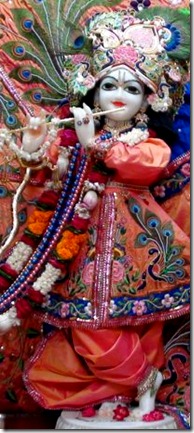 In the Vedic tradition, the corresponding term for the highest being not fully understood is “Brahman”. Every living entity is part and parcel of Brahman, which is the Absolute Truth. Beyond the dualities of heat and cold, life and death, pain and pleasure, and happiness and sadness is Brahman. The outer covering of the soul goes through changes, but the soul itself does not. Therefore by coming to the realization of Brahman, a living entity can understand that whatever shifts they experience in life are only temporary and that their soul will live on. The soul is the greatest natural acrobat, jumping from one life form to another. In the Vedic tradition, the corresponding term for the highest being not fully understood is “Brahman”. Every living entity is part and parcel of Brahman, which is the Absolute Truth. Beyond the dualities of heat and cold, life and death, pain and pleasure, and happiness and sadness is Brahman. The outer covering of the soul goes through changes, but the soul itself does not. Therefore by coming to the realization of Brahman, a living entity can understand that whatever shifts they experience in life are only temporary and that their soul will live on. The soul is the greatest natural acrobat, jumping from one life form to another.To know that we are spirit is one thing, but to actually say that you have realized Brahman, or the impersonal feature of God, is another. Since under the model which seeks connection with the all-pervading Absolute Truth there is no tangible information presented about the features of Brahman, or even where it comes from, the spiritualist is left with very limited tools for advancing in consciousness. The recommended path for the brahma-jnani is nirguna worship, wherein the Absolute Truth is considered formless and thus meditated upon within the heart. The definition of nirguna should be understood in its proper context, as it applies to the conditioned entity who has associated with their outer covering for so long and is thus unable to properly envision the transcendental form of the Supreme Person. Since their own body is temporary and inferior to spirit, the conditioned entity given to nirguna worship assumes that Brahman must also be without attributes. This is humorous in a sense because the very label of being “attributeless” is itself an attribute. On an even higher level of thought, something can only be without form if there exists something with a form. Darkness can only be present if light exists, for darkness is the absence of light.
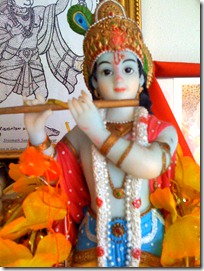 Nirguna worship typically involves giving up all activity and chanting the sacred syllable om. In the Bhagavad-gita, one of the most celebrated scriptures of the Vedic tradition, it is said thatom is a direct representation of the Absolute Truth, Brahman. Om is to be given the highest respect, as it is found in almost every important Vedic mantra. Coupled with meditation on the nirguna feature is study of Vedanta philosophy, which covers the differences between matter and spirit in great detail. Through these processes, renunciation is solidified, and ideally at the time of death the soul will choose in favor of formless spirit. Turning their back on material life, the nirguna worshiper eventually merges into the Brahman effulgence. Nirguna worship typically involves giving up all activity and chanting the sacred syllable om. In the Bhagavad-gita, one of the most celebrated scriptures of the Vedic tradition, it is said thatom is a direct representation of the Absolute Truth, Brahman. Om is to be given the highest respect, as it is found in almost every important Vedic mantra. Coupled with meditation on the nirguna feature is study of Vedanta philosophy, which covers the differences between matter and spirit in great detail. Through these processes, renunciation is solidified, and ideally at the time of death the soul will choose in favor of formless spirit. Turning their back on material life, the nirguna worshiper eventually merges into the Brahman effulgence.However, as there cannot be formelssness without a form, there is a higher realization of the Absolute Truth, one which connects with the source of Brahman, the fountainhead of all matter and spirit. The Vedas describe the Absolute Truth as being without hands and without legs but capable of accepting every offering made to Him and running faster than the wind. There is no contradiction here, as these descriptions point to the spiritual attributes possessed by the Supreme Lord. The material arms and legs we get at the time of birth are dull matter in that their capabilities are limited to the specific body type and the nature of the realm in which they operate. With God, His features are not limited in any way. There is no difference between His body and His spirit. This is something very difficult to understand, so to help the living entities along in their spiritual enlightenment, Bhagavan, the Supreme Personality of Godhead possessing the attributes of beauty, wealth, strength, knowledge, fame, renunciation and wisdom simultaneously and to the fullest degree, makes appearances on earth every now and then. Enacting wonderful pastimes and imparting sublime teachings, the Lord then returns to the spiritual world, His eternal abode. 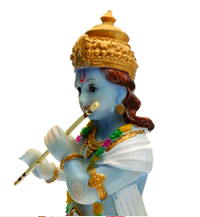 As the events of the divine descents are documented by sages in the great Vedic texts, anyone interested in advancing past nirguna worship can do so by following what is known as saguna worship. When the Lord is understood to be fully featured with transcendental attributes, the living entity can remember those forms and meditate upon them. This is where the deity and the picture representations come in. Superior to meditating on what is viewed to be essentially nothing within the heart is gazing at the non-different expansion of Bhagavan manifested in earthly elements such as wood and resin. Ordinary matter is dull and lifeless, but when it is used to construct replica forms of the Supreme Person and His various incarnations, it becomes fully spiritualized. The deity or picture of the Lord is the authorized object of worship, as it is non-different from the person it represents. As the events of the divine descents are documented by sages in the great Vedic texts, anyone interested in advancing past nirguna worship can do so by following what is known as saguna worship. When the Lord is understood to be fully featured with transcendental attributes, the living entity can remember those forms and meditate upon them. This is where the deity and the picture representations come in. Superior to meditating on what is viewed to be essentially nothing within the heart is gazing at the non-different expansion of Bhagavan manifested in earthly elements such as wood and resin. Ordinary matter is dull and lifeless, but when it is used to construct replica forms of the Supreme Person and His various incarnations, it becomes fully spiritualized. The deity or picture of the Lord is the authorized object of worship, as it is non-different from the person it represents.Saguna worship is superior to nirguna worship because there is less of a chance for error. When God is considered formless or without a personality, it becomes easier for a cheater to trick the public into thinking that he is God. “I have become God through my intense meditation and study of Vedanta. Worship me and I will show you how to become God as well.” Of course these are silly proclamations, as no one can become God. Bhagavan is the Supreme Lord and has always been so. Yet in the absence of information of the Lord’s spiritual forms and attributes, such cheaters can gather large followings. The prescriptions they provide will glide their followers further down into hellish life.
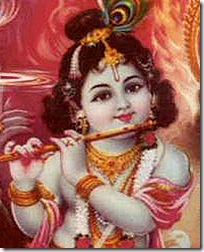 As the aim of life is to purify consciousness to the point that God, in one of His non-different spiritual forms, is remembered at the time of death, every spiritual practice should be understood in that light. In this sense both nirguna and saguna worship are very important, as they are aimed at purifying consciousness. Goswami Tulsidas accurately compares these processes to the sides of a golden jewelry box. The box itself is made of gold, therefore its importance and opulence are not ignored. Nevertheless, what’s inside the box is what is more important. Correspondingly, the holy name of the Lord, which is a direct incarnation of His original feature of Bhagavan, is the real jewel of spiritual practice, a way of remembering and connecting with God through a transcendental mellow, or rasa, at all times. As the aim of life is to purify consciousness to the point that God, in one of His non-different spiritual forms, is remembered at the time of death, every spiritual practice should be understood in that light. In this sense both nirguna and saguna worship are very important, as they are aimed at purifying consciousness. Goswami Tulsidas accurately compares these processes to the sides of a golden jewelry box. The box itself is made of gold, therefore its importance and opulence are not ignored. Nevertheless, what’s inside the box is what is more important. Correspondingly, the holy name of the Lord, which is a direct incarnation of His original feature of Bhagavan, is the real jewel of spiritual practice, a way of remembering and connecting with God through a transcendental mellow, or rasa, at all times.Nirguna worship is imperfect because it doesn’t clearly define the Supreme Lord’s features. Saguna worship has a defect in that when one is not in the presence of the deity or incarnation, there is the chance that God can be forgotten or His worship neglected. With the holy name placed on the tongue, religious life can continue uninterrupted. The name can be invoked at any time and at any place, thus making it the most powerful incarnation. The holy name also brings consciousness of both the saguna and nirguna aspects to the conditioned living entity. Indeed, when consciousness becomes fully purified, the proper understanding that both nirguna and saguna are the same is achieved. Brahman, Paramatma, and Bhagavan are just different realizations, for the Supreme Lord’s position does not change at any time. Depending on the cloud cover on a particular day, we’ll say that the sun is either out or not out, but the sun itself is always there. Similarly, the spiritual reservoir of energy, the fountainhead of all things matter and spirit, remains fully formed and featured in His home in the spiritual sky despite how we choose to worship Him. 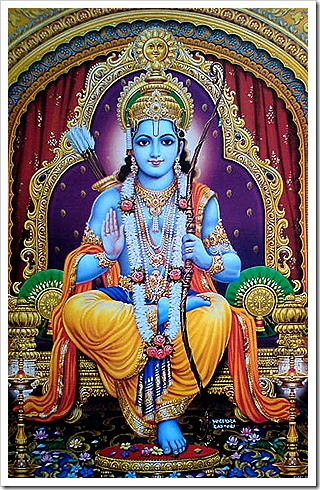 The question remains as to which name should be chanted. Tulsidas prefers the holy name of Lord Rama, who, depending on the tradition followed, is considered either the original form of the Lord or an expansion of Godhead. Though the different Vaishnava factions have varying conclusions in this regard, it is agreed upon that the non-different forms of Bhagavan are equally as capable of providing transcendental pleasure to their devotees. Whether Rama is taken as the original or Lord Krishna, the darling of Vrindavana and the life and soul of Shrimati Radharani, the benefit to the sincere devotee is still there. As producing the names of Krishna and Rama is the best way of addressing the Supreme Absolute Truth in a loving way, the maha-mantra becomes the most important sequence of words to remember and relish on the tongue. Those who regularly chant, “Hare Krishna Hare Krishna, Krishna Krishna, Hare Hare, Hare Rama Hare Rama, Rama Rama, Hare Hare”, find the true gem of spiritual life, something which secures the highest transcendental taste. The whole point of our existence is to one day bask in the glory and bliss that comes from direct association with the Divine. All other processes of spiritual life, be they of the higher or lower variety, can at best become the sides of a golden box. But nothing can take the place of the valuable gem that is the constant recitation of the holy name of the Lord. The question remains as to which name should be chanted. Tulsidas prefers the holy name of Lord Rama, who, depending on the tradition followed, is considered either the original form of the Lord or an expansion of Godhead. Though the different Vaishnava factions have varying conclusions in this regard, it is agreed upon that the non-different forms of Bhagavan are equally as capable of providing transcendental pleasure to their devotees. Whether Rama is taken as the original or Lord Krishna, the darling of Vrindavana and the life and soul of Shrimati Radharani, the benefit to the sincere devotee is still there. As producing the names of Krishna and Rama is the best way of addressing the Supreme Absolute Truth in a loving way, the maha-mantra becomes the most important sequence of words to remember and relish on the tongue. Those who regularly chant, “Hare Krishna Hare Krishna, Krishna Krishna, Hare Hare, Hare Rama Hare Rama, Rama Rama, Hare Hare”, find the true gem of spiritual life, something which secures the highest transcendental taste. The whole point of our existence is to one day bask in the glory and bliss that comes from direct association with the Divine. All other processes of spiritual life, be they of the higher or lower variety, can at best become the sides of a golden box. But nothing can take the place of the valuable gem that is the constant recitation of the holy name of the Lord. |
Search This Blog
Thursday, June 9, 2011
Protective Coverings
Subscribe to:
Post Comments (Atom)
No comments:
Post a Comment